拍賣筆記 vol.7 伯希和、大衛威爾夏代牙璋584.2萬港元成交,高古玉再傳捷報 - A Paul Pelliot, David-Weill rare and large jade ceremonial blade, yazhang, Xia Dynasty.
- SACA

- Apr 9, 2024
- 3 min read

估價 250-350萬港元
成交價:584.2萬 港元
競爭激烈,nobu電話和nicolas電話,380、400、420、480萬落槌。
l0073 nicolas電話
盧芹齋,巴黎
大維威爾(1871-1952年)收藏,巴黎,1930年入藏,收藏編號 D.W. 3040
巴黎蘇富比2015年12月16日,編號14
35.8 cm
新石器時代至商初 約公元前2000-1500年 玉牙璋
Estimate:2,500,000 - 3,500,000 HKD
出版
Paul Pelliot, Jades archaïques de Chine appartenant à M. C. T. Loo, Paris, 1925, pl. VII.2.
伯希和,《Jades archaïques de Chine appartenant à M. C. T. Loo》,巴黎,1925年,圖版VII.2
此牙璋尺寸寬碩,為大維威爾舊藏;據羅森所述,璋於新石器時代玉器中未見雛形,其源頭仍待考證,詳見羅森,《Chinese Jade from the Neolithic to the Qing》,倫敦,1995年,頁188。凡璋者皆打磨細膩、薄巧輕靈,乃知用作禮器,亦可彰示權力。
二里頭文化時期,此類玉器多見於中原城址,流布甚廣,主要集中於陝西神木石峁及四川廣漢兩地,見楊伯達,〈Jade Zhang in the Collection of the Palace Museum, Beijing〉,《Chinese Jade. Selected Articles from Orientations 1983-1996》,頁141-146,及羅森,前述出處,頁188-191。
同時期內,西北石峁文化、廣漢二里頭文化等城市聚落所造玉璋形制大體相同,然玉料選擇及紋飾細節各個有別。此件大維威爾舊藏牙璋玉色深綠偏黑,幾乎不透光,與石峁遺址所出頗似。參考《中國出土玉器全集14:陝西》,北京,2005年,頁17-19。另有若干例,藏北京故宮博物院,見楊伯達,前述出處,頁145-147,圖8至11。
尤莫弗普勒斯舊藏也有兩例,自1937年起入藏大英博物館,錄於羅森,前述出處,頁189,圖3。Sonnenschein 收藏及 Winthrop 收藏亦各有數例,見 Alfred Salmony,《Archaic Jades from the Edward and Louise Sonnenschein Collection》,芝加哥,1952年,圖版XXVIII,頁88,編號1,及羅樾、胡博,《Ancient Chinese Jades from the Grenville L. Winthrop Collection in the Fogg Art Museum, Harvard University》,劍橋,麻薩諸塞州,1975年,編號219至221。
上手感受:
尺寸巨大,材質特殊,墨色、綠色分色難得。
早期玉器不以透光為標準,和夏代、商代殷墟的青銅器和出土器物一樣,這時期的高古器物以高古為美。至於何謂高古,這是千百年來中國精英、文人、藝術家追求的問題。從二里頭、殷墟的神秘氣象學習高古,不失為一種奢侈。
趙孟頫言:若無古意,雖工無益。
牙璋是禮器,也是目前最缺乏的東西,禮儀。這類器物早期由西方人收藏,香港四大家族的何東後代何鴻卿(Sir Joseph Hotung)便是玉器的大藏家。
優點:David David-Weill的品位保障,真假無疑問。伯希和著錄明確。
缺點:傳承顯赫的優質玉器多為博物館收藏,認知水平尚未跟上。
As noted by Jessica Rawson, large jade blades such as the present example from the David-Weill Collection have no prototypes among the stone implements of the Neolithic period and the source of this shape remains unknown, see Jessica Rawson, Chinese Jade from the Neolithic to the Qing, London, 1995, p. 188. Blades of this form are often of large size and are extremely finely and thinly carved suggesting a ceremonial function. They have also been described as sceptres.
While this blade type flourished in metropolitan China during the Erlitou period, the distribution of this blade type is surprisingly wide yet focusing on two principal sources, Shenmu Shimao in Shaanxi and Guanghan in Sichuan province, see Yang Boda, 'Jade Zhang in the Collection of the Palace Museum, Beijing', in Chinese Jade. Selected Articles from Orientations 1983-1996, pp. 141-146, and Jessica Rawson, ibid., pp. 188-191.
While the basic form of these blades made at the same time in metropolitan China, the northwestern Shimao culture and the Erlitou culture at Guanghan is the same, there are variations in the details and choice of jade. The blade from the David-Weill Collection is carved from a dark green, almost black stone of little or almost no translucency. It may be linked to blades carved from a very similar quality and colour stone recovered from the hoard at Shenmu Shimao in Shaanxi. Compare three flanged blades of comparable stone quality published in The Complete Collection of Unearthed Jades in China, vol. 14, Beijing, 2005, pp. 17-19. Several examples that entered the collections of the Palace Museum, Beijing, are discussed and illustrated in Yang Boda, op.cit., pp. 145-147, figs 8-11.
Compare two other examples from the Eumorfopoulos Collection and acquired by the British Museum, London, in 1937, illustrated in Jessica Rawson, op.cit., p. 189, fig. 3. Similar blades from the Sonnenschein and Winthrop Collections are illustrated in Alfred Salmony, Archaic Jades from the Edward and Louise Sonnenschein Collection, Chicago 1952, pl. XXVIII, p. 88, no. 1; Max Loehr and Louisa G. Fitzgerald Huber, Ancient Chinese Jades from the Grenville L. Winthrop Collection in the Fogg Art Museum, Harvard University, Cambridge, Massachusetts, 1975, cat. nos 219-221.



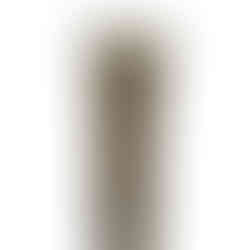

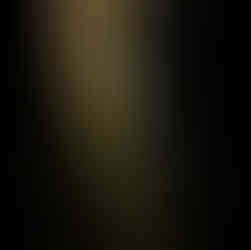






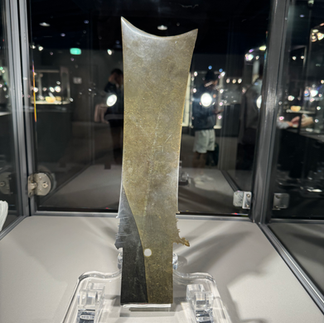





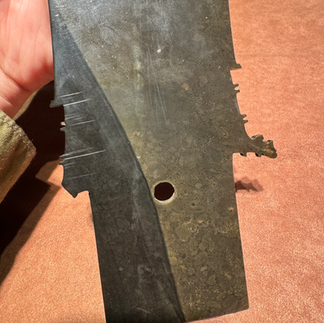



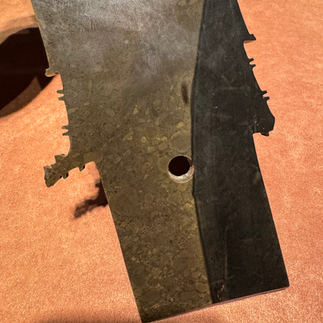

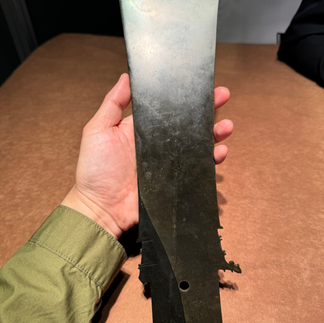




















Comentarios